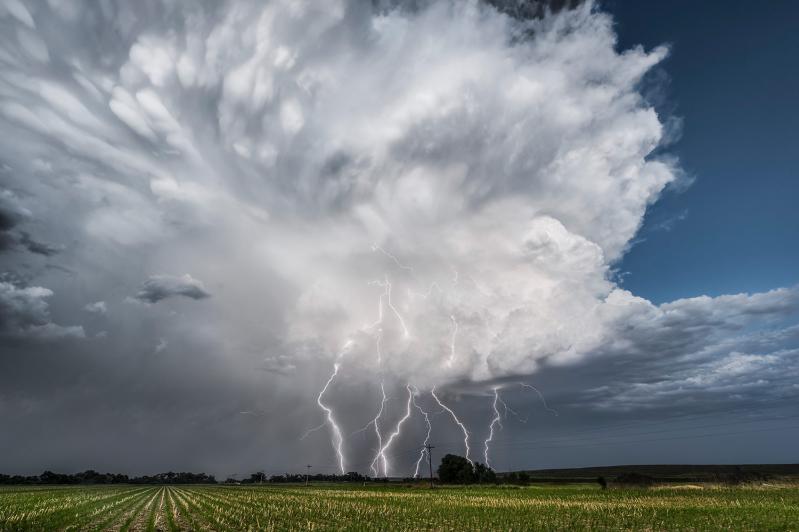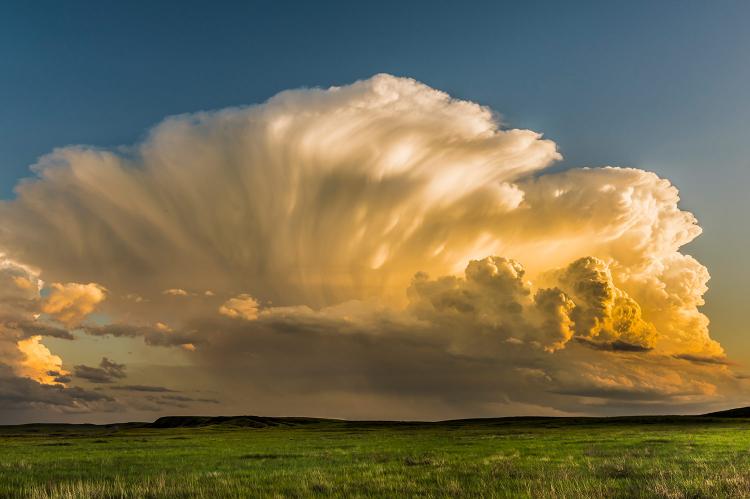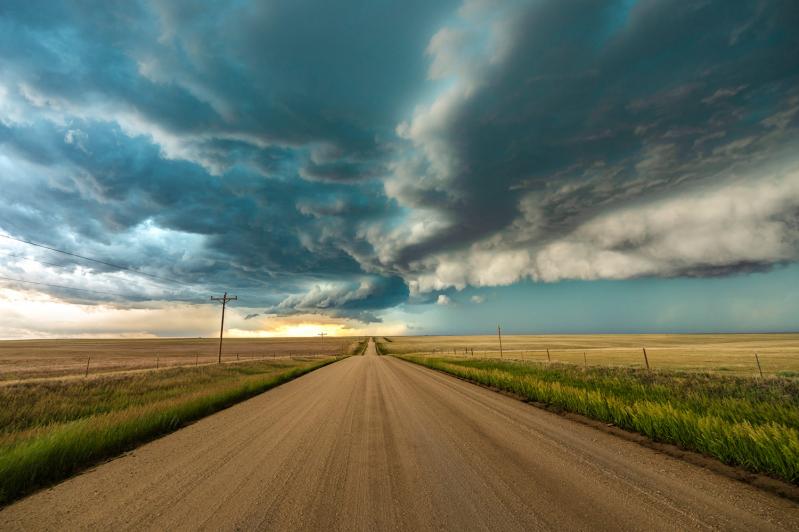Eric Meola is a storm chaser. For the past several years, he has loaded his camera equipment and traveled west from Sagaponack to the Great Plains and “Tornado Alley” — from the Rio Grande in Texas to Alberta and Saskatchewan in Canada — to follow and capture the dramatic spring and early summer storms.
He first became acquainted with the Plains states on a trip with his family at 18 in the 1960s. His fascination with Western storms began on a photo shoot in Nevada in 1977 with Bruce Springsteen, whose “Born to Run” cover Mr. Meola had shot. A violent storm was approaching, and he had Mr. Springsteen get in the car and drive toward him as he took photographs with the storm in the background.
The photos wouldn’t appear on an album until “The Promise” in 2010, but the storm inspired Mr. Springsteen’s song “The Promised Land” on his 1978 album, “Darkness on the Edge of Town.”
Mr. Meola recalled last week that “after seeing the storm with Bruce, it always stuck in my mind to go back out there, but I never did.” News reports of a 2011 tornado in Joplin, Mo., that razed the town and killed scores of people became the impetus to return.
The following spring, he found a company out of Arlington, Tex., called Tempest Tours. “It was too late to go out with them that year, but I went in 2013, and it was spectacular. We saw three tornadoes and a lot of lightning storms and I was hooked. I just kept going back, every single spring since then.”
A professional photographer by trade, he has a poet’s heart, and in “Fierce Beauty: Storms of the Great Plains,” a book he has recently compiled of his sojourns so far, his descriptive language of the Plains and its storms is as striking as his images.

That first year was a great one. “It’s a day to day, week to week, season to season thing,” he said. “There are some seasons where I’ve gotten very little, and other seasons where it just doesn’t stop.”
Meteorologists travel with the tour companies and work with the Storm Prediction Center’s forecasts and their own equipment to narrow down where the storms will form. Working in three-day increments, they determine where best to direct their energies. With daily drives averaging 300 to 500 miles and as much as 900, Mr. Meola said it is important to pin down the days and locations of the best activity.
“If you start to drive all the way up to North Dakota and then day two is going to be down in Texas, you might eliminate day two, for the sake of day one. But if in the meteorologist’s estimate day two is the better set-up, then they might ignore day one. Every day is different.”

It is an intense way to live. He has often ended the day in the “middle of nowhere, chasing a storm on a gravel road end, miles from a hotel.” Since they often don’t know where they will end up, they have to book something for the night at the last minute, “and sometimes those places are dicey.” They are often cooped up in vans for hours and get to a town long after the restaurants are closed. “It wears you down,” he admitted. He goes for two weeks at a time, heading home to rest before heading out again.
The season runs from late April to early July, with the peak at Memorial Day weekend. Storms typically form in Louisiana and eastern Texas and then intensify as they move north and west. Although they have ended up as far north as Canada for major storms, he said going through customs at the border slows them down. “When you want to get to a storm, you’re racing against time. Very often, the tornado will form along the border, and then you need to get back to the U.S.”

In general, the goal is to leave as many options open as possible. “It’s easy to get tempted just to go to the nearest target.”
With all of the emphasis on getting there, danger is not always where it would be expected. Being in the path of a tornado is the most dangerous, but the meteorologists on the tour are “cautious to a fault” in preventing that from happening, he said. Other hazards are “lightning, because you’re standing out in the open a lot. Large hail can kill easily,” too. Then there are ticks and rattlesnakes hidden in the deep grass.
Something called “chaser convergence” could be the most hazardous of all. On busy weekends near cities where there might be 20 cars on the road all chasing storms, “drivers are tired and preoccupied,” he said. “Everyone can get caught up in the excitement. They’re distracted.” Some cars will speed off and go right through an intersection, not even seeing it. The drivers’ behavior can be harder to predict than the weather.
The book, which will be published on Nov. 11, has essays by Mr. Meola and a veteran storm chaser. An afterword describes how Mr. Meola took and minimally processed the more than 100 photographs.

